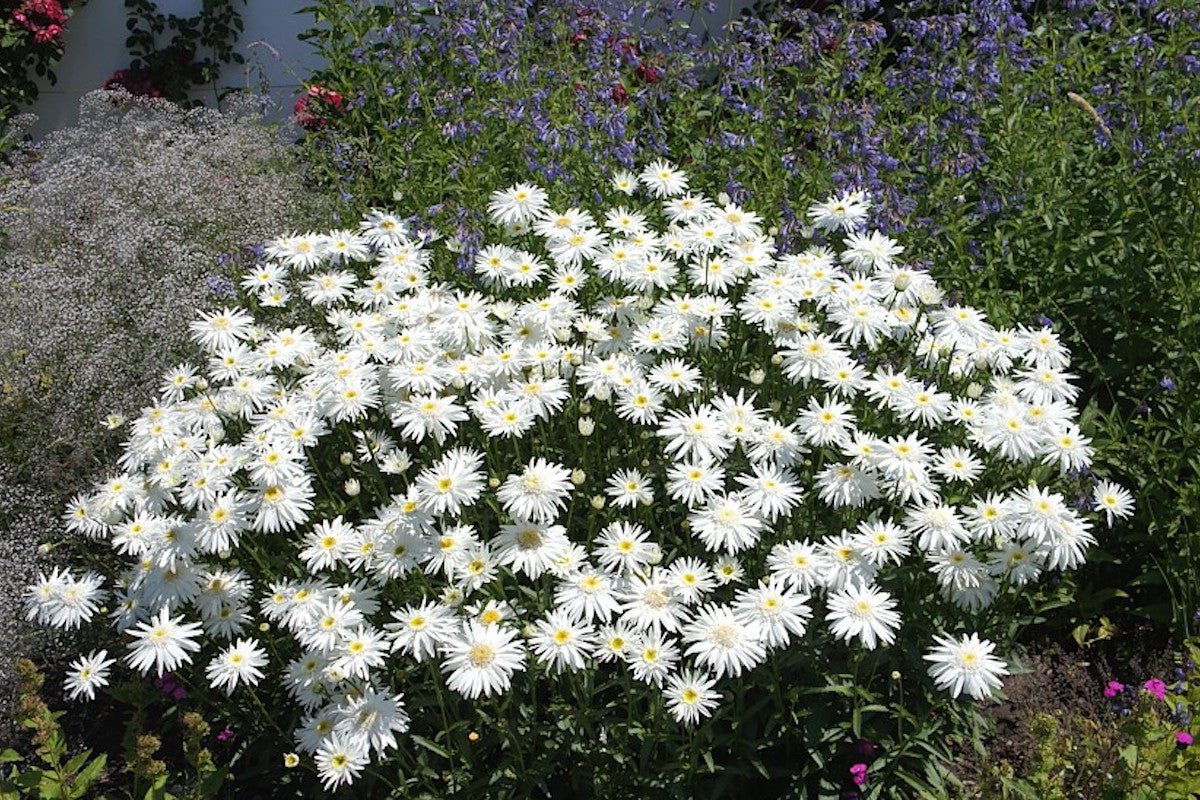Leucanthemum x superbum 'Wirral Supreme'
Approx. 0.5 litre pot
About this cultivar:
Leucanthemum x superbum 'Wirral Supreme' is a robust herbaceous perennial to with narrow, dark glossy green leaves and supremely large double white flowers. Reproted to be hardier than other Leucanthemum, this one has the Royal Horticultural Society Award of Garden Merit (RHS AGM).
- Position: Full sun, partial shade
- Soil: Almost any soil, grows well in Ballyrobert
- Flowers: July, August, September
- Other features: Bees and Butterflies, Cut Flowers or Dried Flowers
- Hardiness: H5 - Hardy in most places throughout the UK even in severe winters (-15 to -10°C), Fully hardy, grows well in Ballyrobert
- Habit: Clump forming, bushy
- Foliage: Deciduous
- Height: 60 - 90 cm (2 - 3 ft)
- Spread: 45 - 75 cm (1.5 - 2.5 ft)
- Time to full growth: 2 to 5 years
- Plant type: Herbaceous Perennial
- Colour: Green, white, yellow
- Goes well with: Kniphofia, Achillea, Penstemon, Echinacea
About this genus:
Leucanthemum was formerly included in the genus Chrysanthemum but is now considered a genus of its own in the daisy family (Asteraceae). The name Leucanthemum derives from the Greek words leukos (white) and anthemon (flower).
Here at Ballyrobert we mostly grow Leucanthemum x superbum, commonly called Shasta daisy. It is a hybrid developed by Luther Burbank (1849-1926) in the 1890s near snow covered Mt. Shasta in northern California. Burbank crossed Leucanthemum vulgare (European oxeye daisy), Leucanthemum maximum (Pyrenees chrysanthemum), Leucanthemum lacustre (Portuguese field daisy) and Nipponanthemum nipponicum (Japanese field daisy) to produce Leucanthemum x superbum- the Shasta daisy is quite a mix!
Easily grown in most soils, they prefer full sun but will often do well in part shade. They tolerate wetness but wet soils in winter can be fatal.
Try them in hot borders; the white flowers will compliment reds, yellows, oranges well. Some combo ideas are Kniphofia, Achillea, Penstemon, Echinacea.


